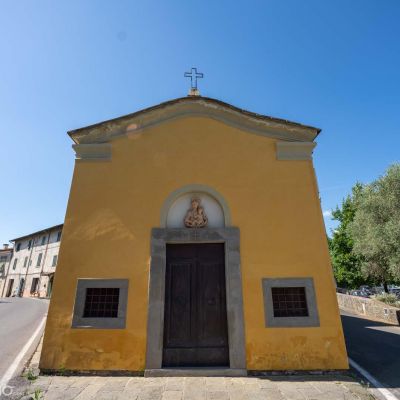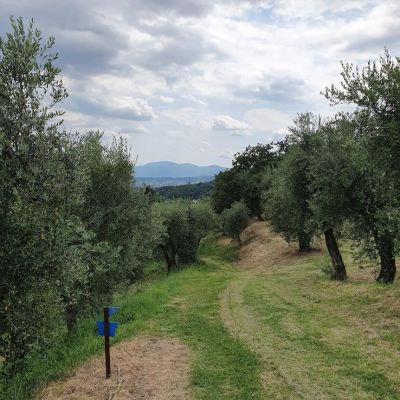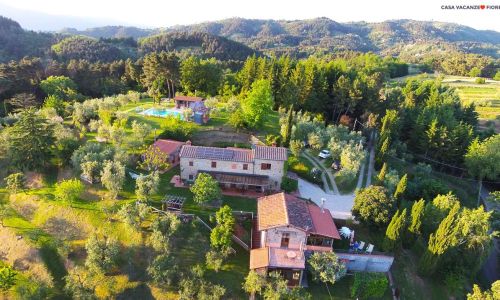Hotel Villa Sermolli
A magic place steeped in Tuscan history and tradition
A historic Villa immersed in the green of the Tuscan hills, in Buggiano Castello, not far from the cities of Lucca and Pistoia. A hotel complex that contains, within its walls, more than 500 years of history that still today emanate all their charm thanks to the maintenance of ancient elements and original frescoes of that time.
A complete immersion in the irresistible beauty of the bucolic countryside and in the splendour of Italian art. Choose the stay of your dreams among the various solutions that Villa Sermolli offers.
Elementi architettonici antichi, affreschi originali, pitture che ricoprono pareti e soffitti.
Per gli appassionati di arte sarà come sognare ad occhi aperti in ogni istante nel nostro albergo.
Ogni camera è unica nel suo genere, ma tutte condividono un dettaglio che risveglierà la vostra pace dei sensi ogni volta che vorrete: le finestre vi regaleranno uno scorcio panoramico della campagna circostante, bella e accesa come un dipinto rinascimentale.
The building you are now standing in the ancestral home of the Sermolli family, a noble Italian family that bought the villa in 1602.
Within a mere four decades, the Sermollis expanded the villa from its original 18 rooms to its current 54, including storage rooms, a kitchen, bathrooms and so on.
The wine cellar, which is used to be the villa’s outer wall, is the sole surviving element of the original 13th century building. The villa was the residence of the Sermolli family for more than three centuries, beginning in around 1640. The villa’s domain once included extensive farmland, a record of which is in view next to the reception desk in the old land register from 1878. This land was pledged to farmers who were required to give the Sermollis half of their annual crops, which were stored in structures such as the limonaia, the villa’s outbuilding – now the site of the villa’s sun deck. This land was pledged to farmers who were required to give the Sermollis half of their annual crops.
These products were stored in structures such as the limonaia, the villa’s outbuilding – now the site of the villa’s sun deck. For centuries the quasi-serfdom to which the farmers were subjected enabled the Sermollis to acquire considerable wealth and purchase farmland and fishing lakes on the marshy plain below Buggiano.
In the mid 17th century Count Leopold began draining the marshes – an effort that was called bonifica.
Up until then all villages, towns and cities had been built on hills because the plains mainly comprised marshland where malaria was rife Once the century-long process of draining the marshes had been completed, cities and towns could be built on the plain . Also Montecatini Terme, whose original location was called Montecatini Alto (“high Montecatini”).
Many resident of Buggiano Castello also migrated elsewhere, causing the town to be eclipsed by nearby Borgo a Buggiano (“the hamlet near Buggiano”). In the 18th century even the city hall was relocated from the magnificent 13th century Palazzo Praetorio (on the piazza 200 meters above the villa, which can be visited) to Borgo a Buggiano. More than 20 successive generations of Sermollis lived in the villa until 1954, when the last childless family member was residing there and the villa, which was in dire financial straits, was sold to an American composer.
Most of the farmland had already been sold off or had been laid waste by military conflicts and rural migration. Nonetheless, the striking Buggiano red that the Sermollis used in the paint for all of their buildings is still visible today – a testament of the family’s legacy.
Only the poorest farmers lived in houses made of exposed stone, while their somewhat better off fellow farmers, as well as affluent landowners such as the Sermollis, could afford to plaster over the stone.
In the 1970’s the villa was sold to a group of Swiss artists, who used the building as a vacation home, gallery and concert space for nearly four decades.
Since the spring of 2011, the villa has been a bed and breakfast that enables its guests to have the unusual experience of staying in a magnificent preserved home of former Tuscan nobles.
Air conditioning
Swimming pool
Bathtub
Shower
Pets allowed
Electric bicycle rental
Sat TV
Relax area
Garden
Terrace – balcony
Servizio in camera
Mini bar
Via Umberto I, 2/8, 51011 Buggiano Castello PT
Host









































































